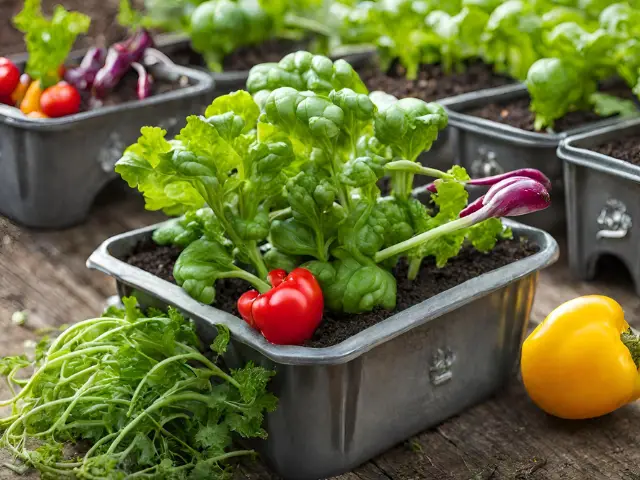Growing your Own Vegetables in Containers
In recent years, there has been a surge of interest in growing vegetables at home. Whether due to concerns about food safety, the desire for fresher produce, or simply a love for gardening, many people are turning to container gardening as a way to grow their own vegetables. This method allows individuals with limited space, such as those living in apartments or urban areas, to still enjoy the joys of cultivating their own food.
Container gardening offers numerous benefits over traditional gardening methods. First and foremost is the space-saving aspect. With containers, you can grow vegetables on balconies, rooftops, or even windowsills. This means that anyone with access to sunlight can embark on this rewarding journey of cultivating their own produce.
Another advantage of container gardening is the ability to control the environment. By using containers, you have complete control over the soil used and can create ideal growing conditions for each specific vegetable. Unlike traditional gardens where you typically have one type of soil for everything, container gardening allows you to cater to the unique needs of each plant.
To get started with growing vegetables in containers, there are a few key steps you should follow. Firstly, choose appropriate containers that are large enough to accommodate the roots of your chosen vegetables. It’s crucial that they have drainage holes at the bottom to prevent waterlogging.
The next step is selecting the right soil mix. Avoid using garden soil alone as it may be too dense for container growth and lack essential nutrients. Instead, opt for a potting mix specifically formulated for container gardening which provides good drainage and nutrient retention.
Once you have your containers and soil ready, it’s time to choose what vegetables you want to grow. Leafy greens like lettuce and spinach are ideal for beginners as they are relatively low maintenance and have shallow root systems. Herbs such as basil or parsley are also excellent options since they thrive in compact spaces.
When selecting vegetable varieties, consider the size and growth habit as well. Compact or dwarf varieties are better suited for containers than sprawling ones. Additionally, some vegetables like tomatoes and peppers may require staking or trellising to support their growth; keep this in mind when deciding which vegetables to grow.
Next, ensure your chosen location receives enough sunlight. Most vegetables require a minimum of six hours of direct sunlight per day, so choose a spot that can provide this. If you don’t have access to a sunny area, consider using grow lights to supplement natural light.
Watering is another critical factor in container gardening success. Unlike traditional gardens, containers can dry out quickly, especially during hot summer months. Regularly check the moisture levels by sticking your finger about an inch into the soil; if it feels dry at that depth, it’s time to water. Be careful not to overwater, as this can lead to root rot.
Finally, don’t forget about fertilizing your plants. Container-grown vegetables rely on you for their nutrient supply since they cannot access the nutrients present in the ground. Use organic fertilizers formulated for vegetables according to package instructions and be mindful not to over-fertilize.
Growing your own vegetables in containers is a rewarding experience that allows you to enjoy fresh and nutritious produce right at your fingertips. With a bit of planning and care, even the tiniest spaces can be transformed into flourishing gardens. So why not embark on this green adventure and start growing your own veggies today? Happy gardening!













